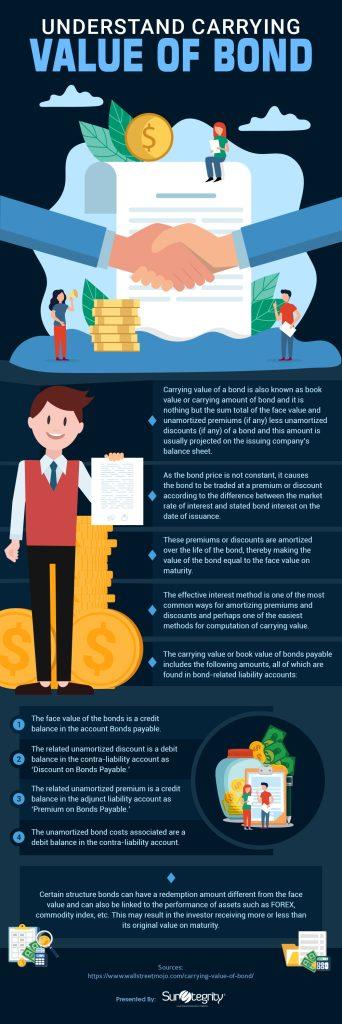The carrying value of a bond is the bond’s face value plus any unamortized premiums or less any unamortized discounts. A carrying value is carried on the balance sheet of a company's financial statements. Because interest rates continually fluctuate, bonds sold after their issue dates typically sell at a premium or discount to par value. The carrying value is the amount that would be owed to bondholders upon maturity, if the bond had a par value of $1,000 but was purchased for $950.
The price of a bond is the value of a bond at a given point of time. For example, on 1st July 2010 the price of an IBM B0 75/06 is $3,200 while the face value is $3200. The difference between the two is referred to as 'carrying value'. This has to do with how much money you will get back once it reaches maturity.
Accounting rules require a bond to carry value and it is shown on the balance sheet of company as a liability despite no payment of interest is being made. However, carrying value is just a way of accounting for bonds but in real sense, there is no actual debt created because bond issuance always involves an upfront premium which is nothing but an interest payment which cannot be deducted by issuer. For more information, refer to the info-graphic below.

